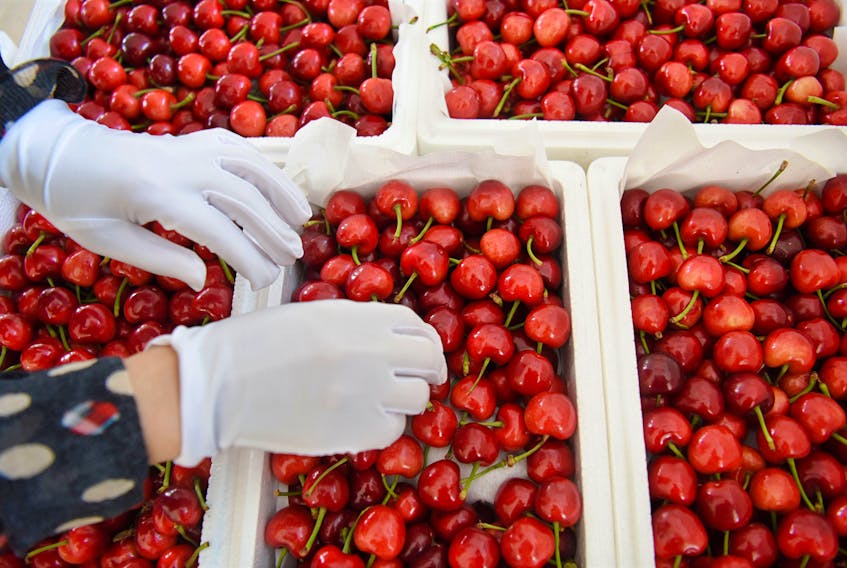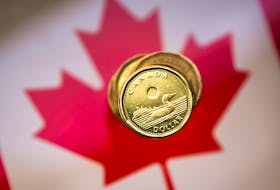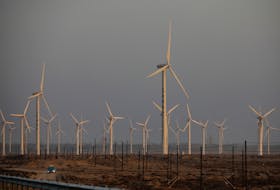By Yawen Chen and Shivani Singh
BEIJING (Reuters) - For public relations officer Rachel Li, paying top dollar for "beautiful" cherries imported from the United States was a no-brainer.
"I heard they are full of iron," said the Guangzhou-based 33-year-old, "eating them makes me feel healthy, luxurious." Or it did, until Beijing imposed sky-high tariffs on U.S. cherries and importers took fright, leaving store shelves bereft and consumers like Li needing a different fruit fix.
Across China's metropolises, the appetite of a burgeoning middle class for expensively fresh U.S. cherries has become a symbolic casualty of China's festering, tit-for-tat trade battle with the United States. A business that grew to nearly $200 million in 2017 from zero in 2000 has now withered to little more than a tenth of its volume peak, customs data shows.
With import tariffs for U.S. cherries set at 50%, Beijing has relaxed regulations allowing imports from Central Asia - a region that just happens to be central to President Xi Jinping's epic 'Belt and Road' infrastructure project, an intercontinental initiative worth hundreds of billions of dollars.
"It's an opportune time for China to fiddle with the knobs and to do so in a way that builds economic ties and offers a new market for 'Belt and Road' partners," said Even Pay, senior agriculture analyst at Beijing-based advisory firm China Policy.
China's Ministry of Commerce didn't immediately respond to a fax requesting comment.
May was the last month for which figures were available at the time of writing, typically the first big month in China's cherry import season. Supplies from Uzbekistan leapt to nearly half of the May total, Reuters' calculations show, from zero a year earlier, while the U.S. share of the cherry import pie shrank to 38% from nearly 80% in May 2018 - and a near monopoly in May 2017.
But total cherry imports into China by volume have plummeted because of the collapse of U.S. shipments: 187 tonnes in May 2019, versus 337 tonnes in May 2018 and 1,505 tonnes in May 2017.
Uzbek cherries sell at about 70-80 yuan per kilogram (kg) at retail level, according to four fruit traders, no more than half the 160 yuan ($23.28) per kg that Rachel Li said she happily remembers stumping up for her sweet U.S. cherries.
No matter the price, though, the volumes now being shipped in are so small that Li said she hasn't seen imported cherries for weeks. A search by Reuters for U.S. cherries at a supermarket and smaller groceries in downtown Shanghai on a recent weekday came up empty-handed.
'IMPOSSIBLE TO DEVELOP'
For Victor Wang, the China representative of U.S. Northwest Cherry Growers, it's now a case of trying keep head above water.
Wang said it took 17 years of marketing and government lobbying to help make U.S. cherries some of the most coveted fruits in China - at one stage his suppliers were even exporting more to China than across the border to Canada. But that all changed in 2018, when two rounds of Chinese tariff hikes added 40 percentage points to import charges.
"With such exorbitant costs after the tariff hikes, and impact of a strengthening dollar, it's impossible to develop the market - we are at best maintaining it for now," said Wang.
Making life harder, Wang said, is the fact that the association has also struggled to advertise the U.S. fruit this year. He said many Chinese media and business partners, including Chinese e-commerce giant Alibaba
Alibaba confirmed that U.S. cherry promotions were halted but rejected any suggestion that was related to U.S.-China tensions. It said the move was due to "market-related factors", including seasons, holidays and unspecified business opportunities.
"Any speculation tied to the current geopolitical climate is groundless," the retailer said in a statement sent to Reuters.
(For a graphic on 'China's cherry imports by origin, May 2017-2019' click https://tmsnrt.rs/2jZrJFi)
'BELT AND ROAD' RULES RELAXED
Just as U.S. supplies shriveled, Beijing has relaxed a requirement for cherries from 'Belt and Road' partners Uzbekistan and Turkey to undergo up to 21 days of pre-shipment cold treatment, making exports easier by allowing fumigation as a pest control measure.
That's opened a trade window not lost on businessmen like Zhu Jianfeng, general manager of Zhejiang Fishing E-Commerce Co, who said he has been investing in unspecified projects in Uzbekistan for years and has "very close ties" with the domestic government.
For the first time this year, Zhu's company imported 300 tonnes of cherries from Uzbekistan, with plans to boost the volume to 5,000-10,000 tonnes in 2020.
Zhu acknowledged a lack of processing technology in Uzbekistan, saying the cherries are sent by air and have a shelf life of up to five days; U.S. cherries, in contrast, last for up to two weeks when transported by air. Zhu said he planned to help the Uzbek industry upgrade by increasing investment in production lines.
Back in Guangzhou, Rachel Li said she's switched her quest for health and luxury through fruit from cherries to avocados. While market data suggests the produce she's buying is most likely from Peru, Li said she had stopped paying much attention to where the fruit is from.
(Reporting by Yawen Chen and Shivani Singh; Additional reporting by Beijing Newsroom; Editing by Kenneth Maxwell)









